This post is a collection of my notes from the recent Thailand International Jazz Camp that I attended from Jan 23 to 25 2017 at Mahidol University in Salaya, Thailand.
Thailand International Jazz Conference (TIJC) Jazz Camp Day 1 Highlights
1. Jazz Bass Workshop with Desmond White
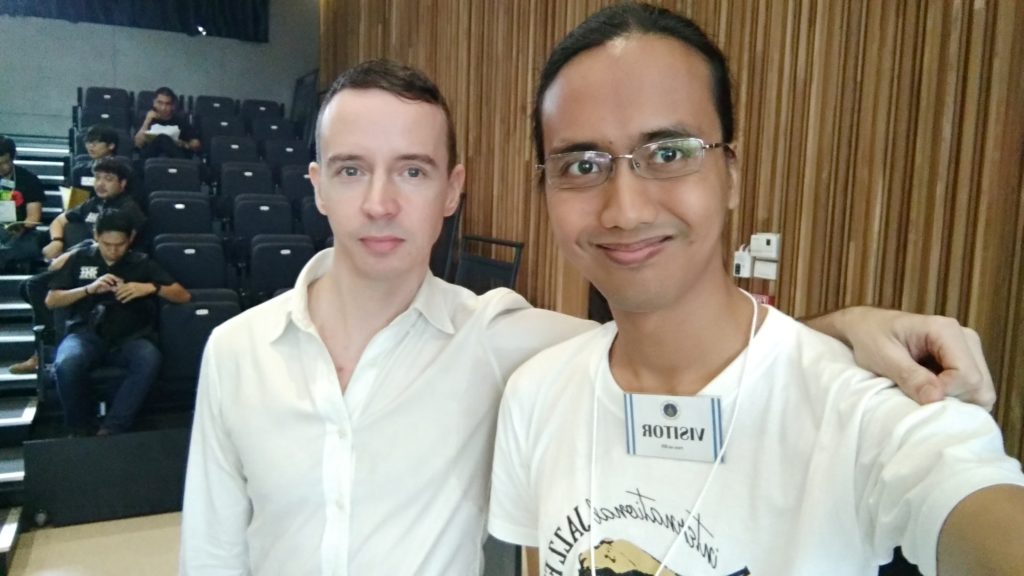
I really loved the way Desmond organized the material for this session. It started off with the importance of fundamental upright bass technique:
a) big accurate sound with no amp, building LH strength with bowed practice, playing with a metronome at a slow tempo to build a strong inner pulse
b) intonation exercises
c) pizzicato technique, getting an equal sound on all strings and playing at the edge of the fingerboard
Then, he went into how to learn a tune in 3 parts: melody, root notes and chord tones and putting it together into a solo version on the bass. For the walking bass lines, he showed example playing on the roots, adding fifths and thirds sparsely.
For metronome practice, my fave ones he mentioned was to put the metronome on beat 4 of every bar and every 2 bars. He also demonstrated how to handle situations when we work with other musicians who feel the time differently than us.
For the final part, he played different examples on Stella By Starlight and also gave some critique to a participant.
2. The Learning of Jazz Drums with Kush Abadey
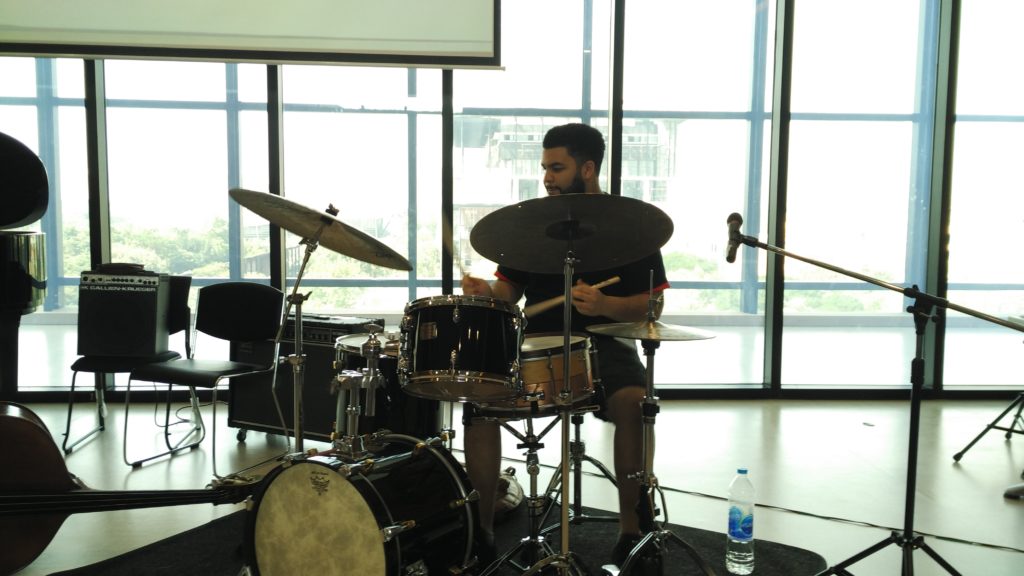
Kush began the session with a drum solo where he started with a press roll into a double stroke roll on the snare and later developed it to the other parts of the drum.
For Kush, the language for drummer are the drum rudiments. For him it starts from the single stroke, double stroke, flam and that forms the other rudiments that forms the language.
To develop a good sense of time, he said:
a) The metronome is your friend
b) To practice things very slow
c) Forget about practicing what you know, practice what you don’t know
In terms of tuning, in general he tunes his floor tom to a C, hanging tom to a F, bass and snare to G (in octaves).
For groove playing, Kush is influenced by Steve Smith, Vinnie Colaiuta, Dennis Chambers and Tony Williams. Kush also recommend the book Four Way Coordination to practice limb independence.
When I asked about learning new styles of music, Kush recommends finding the authentic version of the style to start with and then take their approach (the original players of the style) and make it your own.
3. Advanced Jazz Styles For The Drumset with Kush Abadey
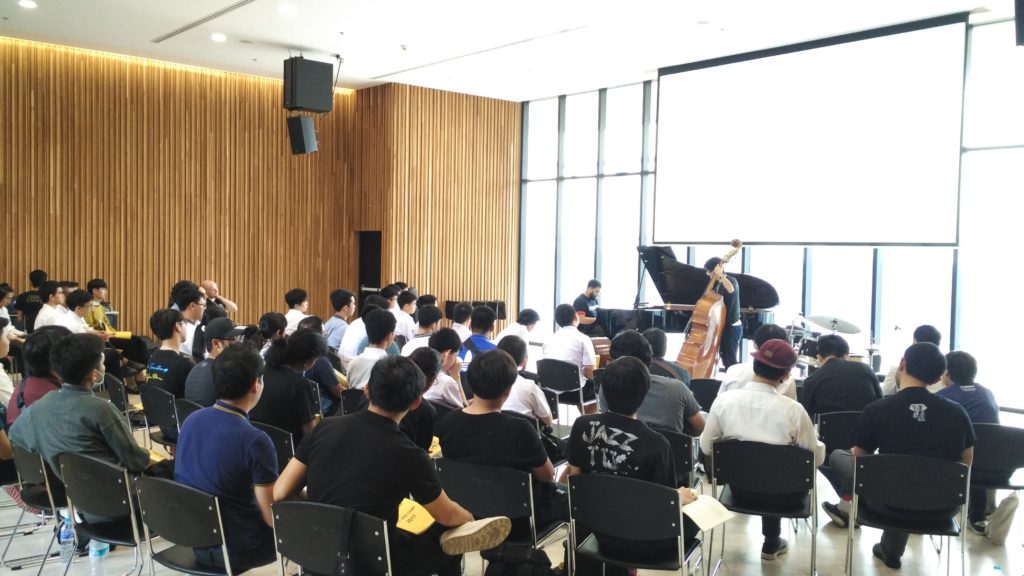
In this continuation of Kush’s previous workshop, he began by discussing about brushwork. He mentioned the importance of branching out from the music that you’re used to, to be flexible with different styles and to check out bebop.
Answering my question on learning a new style of music, he suggested focusing on a specific player or style for around 6 months. When he studies a drummer, he will learn about how the drummer sets up the drum set, how they tune, how they play and how they sit. Some players that he has studied include Steve Gadd and Tony Williams.
In terms of dealing with the feeling of being overwhelmed by learning a new style, Kush said to lower your workload so you can gradually improve in one aspect at a time. He also noted that to master something, it can get boring.
In this session as well, Kush played some piano to demonstrate his approach to learning bebop and the connection between Bach to bop. He also talked about how jazz ballads are connected to Beethoven’s music.
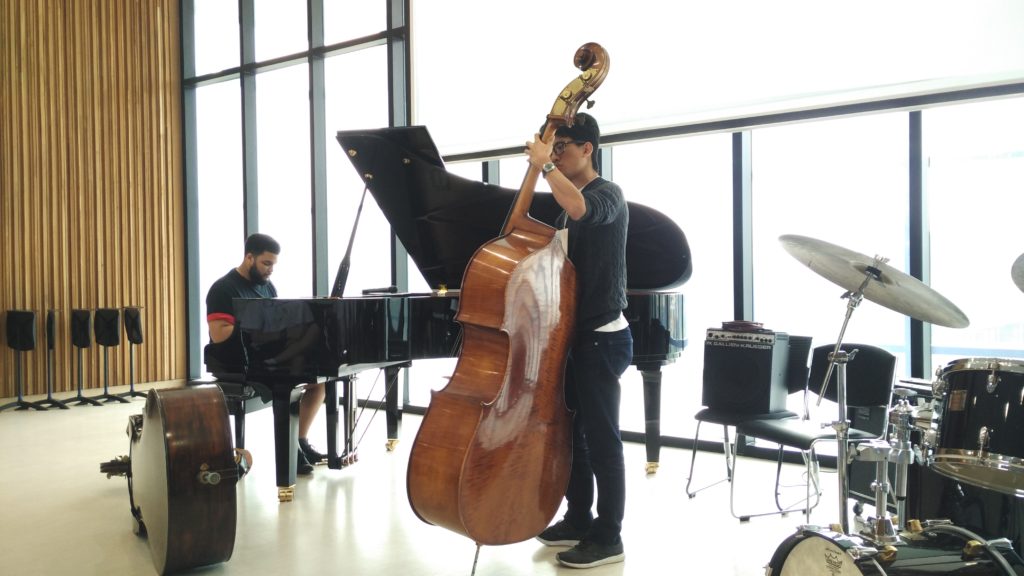
Tan Jen Wei asked a question to Kush about the different kinds of swing including regular jazz swing, Brazilian swing and reggae swing. On this, Kush demonstrated how in jazz swing the accents are on 2 & 4, Brazilian swing is on 1 & 3 and in reggae swing, the 4th beat is important. He also mentioned that the 2 & 4 on the hi-hats in reggae swing are like jazz.
Following that, Kush also explained about different kinds of shuffle styles including Chicago, St. Louis, New Orleans and pop Stevie Wonder style shuffle grooves.
For the remainder of the info-packed session, Kush also shared practice tips for learning swing, hand and foot coordination exercises and playing in different meters.
4. Jam Session
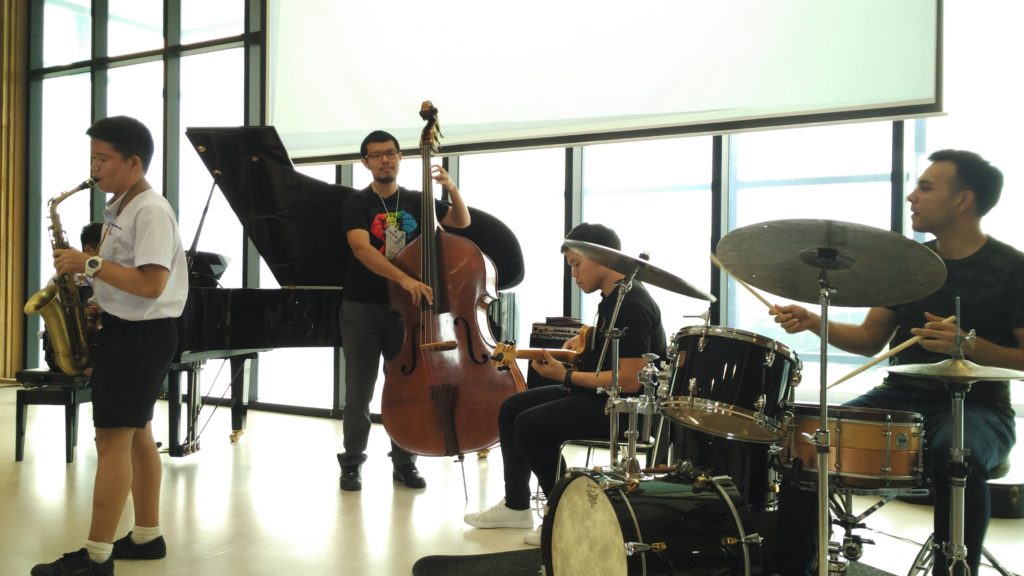
For the jam session, I played on a blues for the first song & some of the other students played 3 other songs:
The Days of Wine and Roses
There is No Greater Love
There Will Never Be Another You
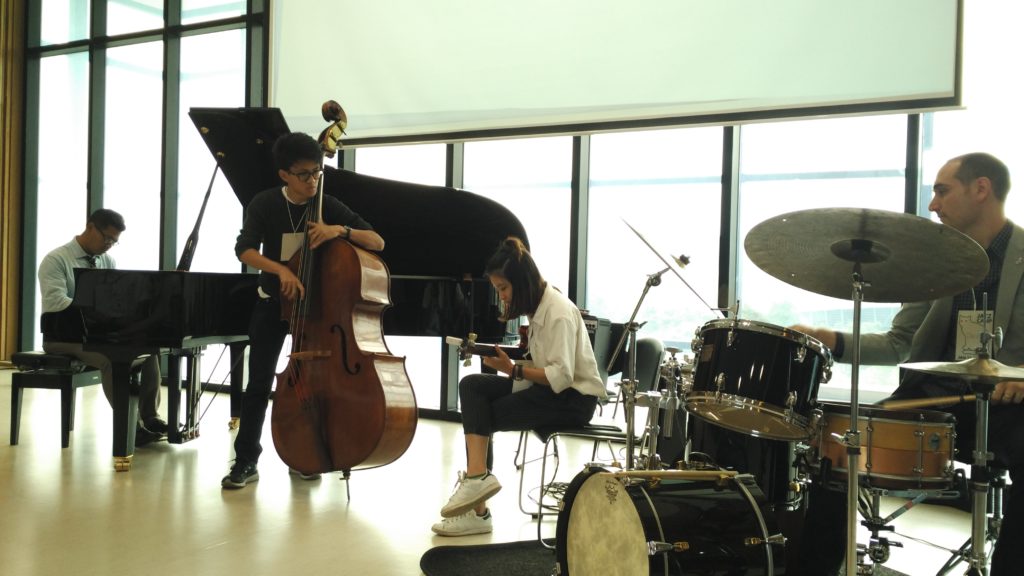
This was a good opportunity for us to hear how we played and get to know the other students musically.
5. Effective Techniques For Learning Original Music with Desmond White
In this workshop, Desmond shared his take on learning Shai Maestro’s music completely by ear, without notating the music down and committing it to memory. He shared a tip he learned from bassist Orlando Fleming who said that if you’re playing every note that you hear, it’s hard to develop your internal time feel. Desmond emphasized the importance to try to feel the time without any physical gesture and to see the time going by.
Desmond also said that drummer Mark Guiliana is an example of a musician who is very methodical in his approach to exploring different time signatures and rhythmic possibilities. Desmond suggested that we should start playing in odd meters such as 7 as soon as possible. This is of course without abandoning the need to have a solid rhythmical sense of 4/4 time.
When I asked him about practicing on the beat, behind the beat and ahead of the beat – Desmond suggested assimilation rather than analysis to be the primary approach for this. For practice sessions, Desmond also said to make sure we have clear goal setting skills to maximise each practice. As an example, he said we could practice something like Stella By Starlight in 9/4.
Thailand International Jazz Conference (TIJC) Jazz Camp Day 2 Highlights
6. Jazz Bass Improvisation on the Bass with Desmond White
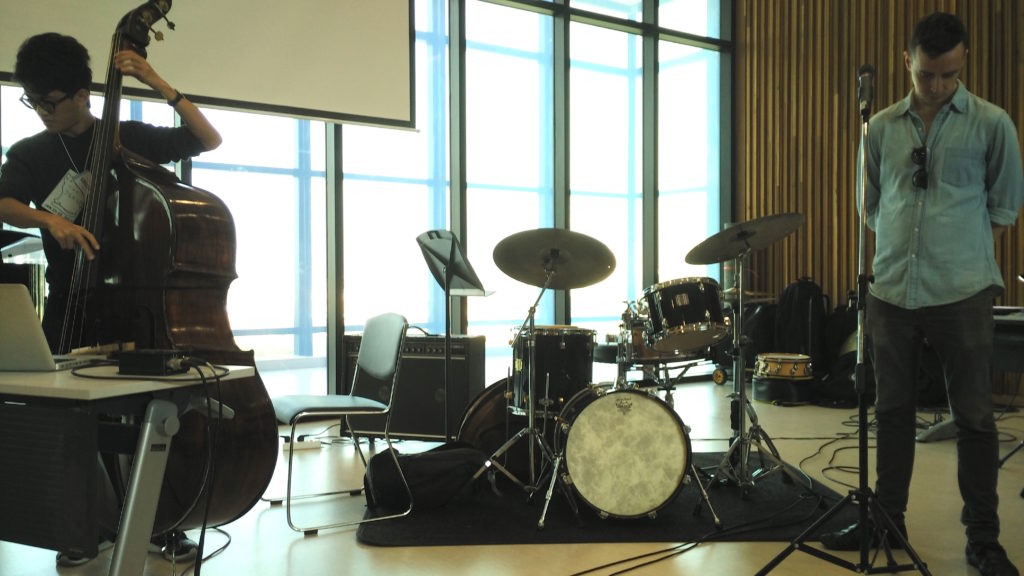
In this workshop, Desmond emphasized the importance of transcribing. He said that for bass solos, it’s often limited by what feels comfortable on the bass. His suggestion to expand from that bass, i.e. instrument centric approach is to transcribe solos from other instruments. He also said that it’s better to transcribe a small amount but to get it right.
For his first example, he used the classic Coleman Hawkins solo on Body and Soul. Desmond showed how he matched his phrasing on bass to Coleman’s playing. Desmond also said to memorize the solo, direct to memory without writing it down. To aid the process, he uses the software “Transcribe!” to slow down the recording before learning some tougher solos up to tempo.
For his second example, he used a Miles Davis solo on Solar. Miles played laid back 8th notes on the solo so this was a great way to get that kind of phrasing into one’s playing.
Some other suggestions from Desmond include:
a) Get your 8th notes to sound like the people you like
b) Lock into the time so that you play together with the band
c) Start solos on the 3rd to get out of the common bass player rut of starting phrases on the root or fifth
d) Transcribe from recordings and don’t think about it too much, just match your phrasing to the recording
e) To memorize chord changes, write it out by hand
f) To navigate through tough or fast chord changes, transcribe Coltrane and Keith Jarrett solos
7. Jazz Masterclass with Kush Abadey
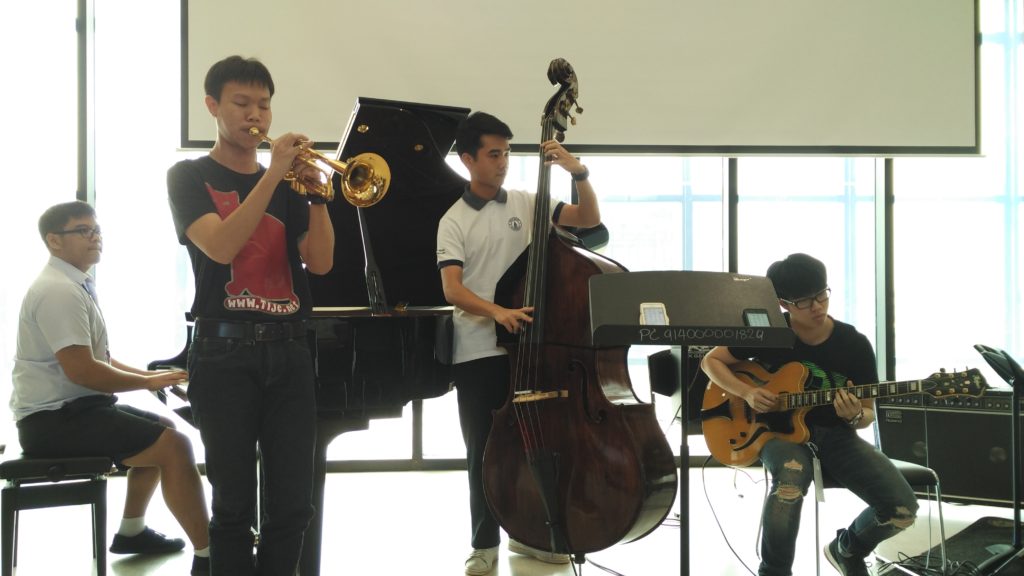
In this session, Kush focused on challenging the participants to switch between different style within a song. Some of the songs he suggested for this kind of exercise include:
a) A Night in Tunisia
b) Green Dolphin Street
c) The Days of Wine and Roses
d) Along Came Betty
e) Just Friends
I was part of the first group that played on stage and we played a more conventional version of Green Dolphin Street followed by a take on The Days of Wine and Roses.
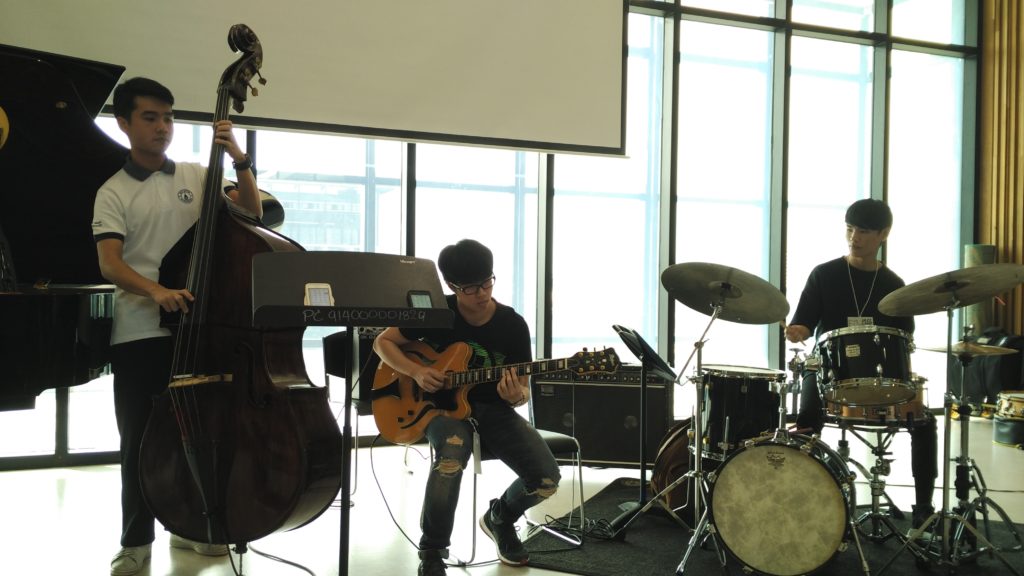
My main takeaway from this session was to try to play common songs in different styles for a fresh view on standards.
To end the class, we did a polyrhythmic clapping exercise with the class divided into 3 groups:
Group A: Clapping in 5 (grouped in 2 and 3)
Group A: Clapping in 7 (grouped in 2, 2 and 3)
Group C: Clapping in 4 (quarter notes)
8. Jam Session
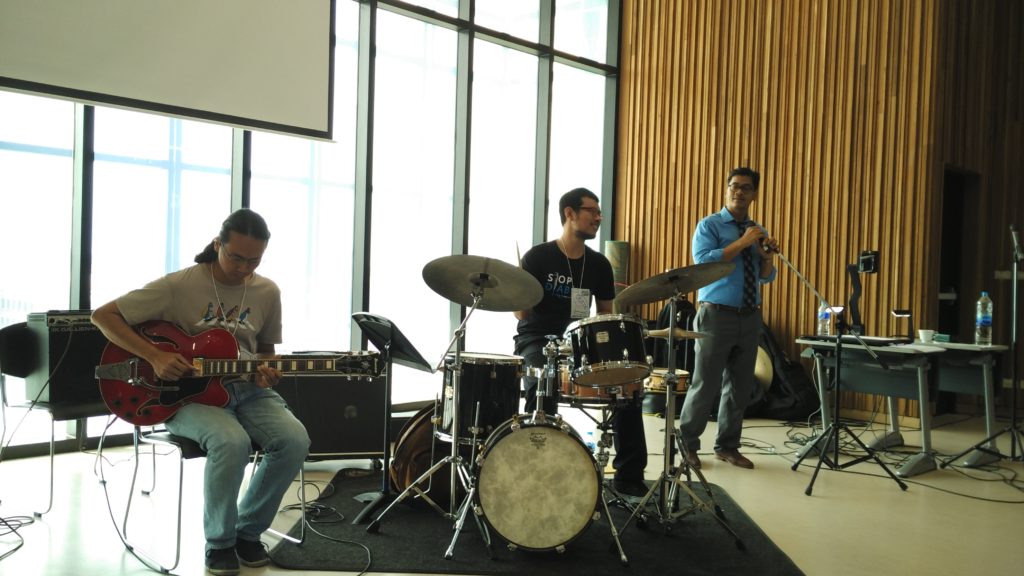
For this jam session, I played on All The Things You Are followed by other participants jamming on:
Footprints
Stella By Starlight
Caravan
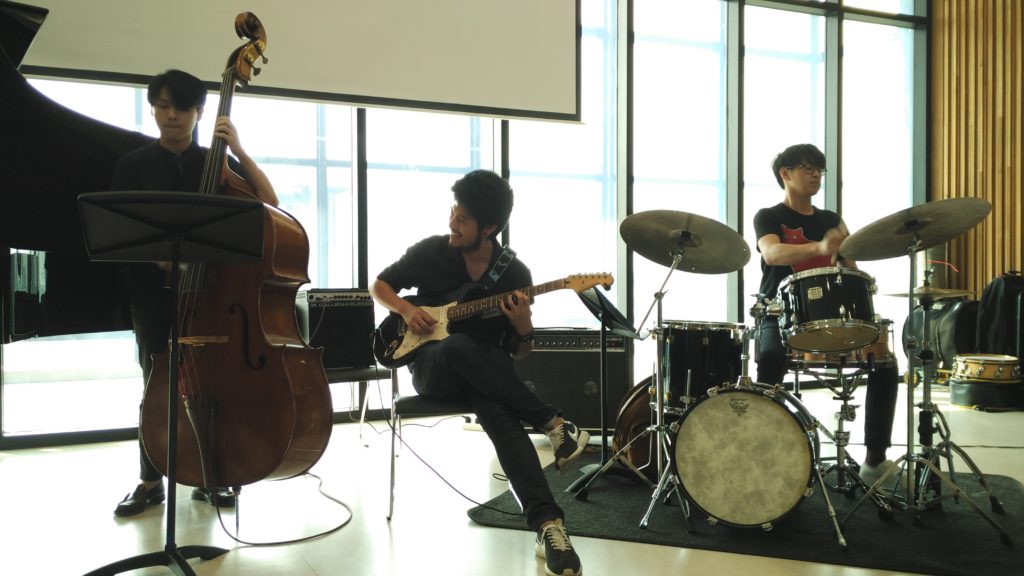
Thailand International Jazz Conference (TIJC) Jazz Camp Day 3 Highlights
9. Creative Jazz Composition with Shai Maestro

This first session with Shai Maestro began with him playing a solo version of his composition Gal. After playing it, he asked if anyone had any questions. Grabbing the opportunity, I asked if he could explain the compositional process for Gal, the piece he just played. What followed was an in-depth (almost 40 minutes, I believe) explanation of how his fascination of one chord voicing developed into an arpeggiated phrase in 7, then transformed by reversing the arpeggio and finally dividing the phrase into a left hand and right hand part. The left hand part eventually develops into a 3-note melodic theme that is doubled by the upright bass.
Shai emphasized the importance of childlike curiosity and how he doesn’t really have any systems for composition. His one rule is to imagine that he’s singing the melody with a guitar & if the song deprived of all that jazz (odd meters, orchestration etc.) can still work, then it’s a good song. He demonstrated a version of Gal in 4/4 to explain this.
He also then explained in another section of he used embellishments to disguise a simple scalar movement in the melody. To further explain this concept, he showed a rhythmic concept that he learned from a drummer friend of his with added double notes in between a cascara pattern (from Cuban music) during the spaces in between the pattern.
For the next song example, he broke down his piece Paradox. For this piece, he explained that it’s important to find the emotional movement first before adding the 9. He emphasized that it’s important for musicians to remember the reason we do music – it’s because of love. If the song works in a simple way, then it can connect.
Shai also shared a current compositional challenge that he is a part of via Will Vinson. According to Shai, Will Vinson invited a group of musicians to be a part of a group that would compose new music based on a set of limitations. For example, you could write a tune using a diatonic scale but harmonize it with any chords within a 32-bar form. Shai also mentioned in a Craig Taborn interview he read, Craig said that creativity blossoms with limitations. To Shai, restrictions are a good thing.
On the topic of bebop, Shai explained his current love for bebop music and how he used to not enjoy it as a young musician. He said it’s important to learn a language to express what you have to say.
His two main tips on listening were:
a) Listen to what you like
b) Stay open to what other people have to tell you
Great tips!
On creating intros and ending for a song, Shai said you have to establish trust with the listener and then start breaking it. The question to ask is, “What happens if I do this?”
He also showed an example by taking a fragment of a melody from Round Midnight to create an intro. For endings, he said it’s different since it’s the end, an ending functions much like a palate cleanser for the listener.
10. Jazz Improvisation Workshop with Shai Maestro
To begin the improvisation workshop, I asked Shai about my own personal challenges in learning how to improvise over my compositions. I felt that I often wrote music that was challenging to improvise over, most definitely at the time I composed the piece.
On this, he said to remember that every piece you ever hear in an original piece. Upon listening to Benny Golson perform I Remember Clifford live, Shai was touched by the fact that Benny wrote this tune in memory of Clifford Brown and how every melodic fragment represented something that Clifford would have played.
Touching on his own musical challenges, he shared an example of him learning an Avishai Cohen tune that had odd meters. To improvise over the piece, Shai created a MIDI playback with the drum pattern so that he could begin to be more comfortable on the meter. Bebop helps said Shai!
Another example that he mentioned was Brad Mehldau’s 7/4 take on All The Things You Are. He said it’s important to transpose ideas into all keys.
Shai also opened up this session to include any other topics beyond improvisation, including on social media. To answer a question that my manager Yin asked, he said it helps if you have a management team and that social media provides a chance for people to know what you do.
Answering a question on learning bebop, Shai said to never practice without playing music, never practice outside of a musical and emotional context. For him, when you’re practicing, you’re practicing your way of being. Therefore, you should not just practice mindlessly in front of the TV or computer but to focus.
On learning motives in different keys, he showed an example of a melody transposed but always played within a musical accompaniment in his left hand with a great time feel.
Continuing this, he shared some odd meter tips emphasizing that odd meters are all a matter of habit. To him, it’s important to break habits like only starting phrases on the 1 but to start on any beat or upbeat so that you really are free to improvise in an odd meter.
11. Jazz Masterclass with Desmond White
In Shai’s ensemble masterclass, he said that the priority is the band first before the ego. He recommended us all to learn music by heart. For him, there are 2 obstacles to learning music:
a) the instrument with the technical demands of learning an instrument
b) the ego
To add sheet music to the equation to him made it more difficult to play music. He said that “Jazz is about being here in the moment.”
In explaining the importance of listening, he worked with a quartet and stopped them many times through their rendition of Honeysuckle Rose. Each time, Shai pointed out something that a band member played and how each phrase was an opportunity to create a conversation with each other. It’s about deep listening and responding to one another instead of going on autopilot and just the routine of playing the melody, taking solos, trading and playing the melody. To him, it’s about the moment, the conversation and listening.
For my friend, Tan Jen Wei and my manager Yin, this particular session was the highlight of the day as it explained an aspect of jazz that I loved the most but could never articulate as clearly as Shai did. It was a magical and insightful session!
13. Piano Masterclass with Shai Maestro

For the final workshop of the 3-day camp, Shai shared his take on playing the piano. To him, it’s very important to hear the harmonic gravity of how each notes feels against a bass note or harmony.
On the topic of reharmonization, hs said anything can be on anything at any time. The options are limitless and then it’s a matter of voice leading. Shai said to study Bach, Shostakovich and Beethoven. For jazz, he mentioned the importance of studying Keith Jarrett.
For ornamentation on his melodic lines, Shai combines the influence of from Sofia, Bulgaria (where his grandmother was from) and Andalucian Spanish music.
Another interesting point he made was how the piano was an instrument of illusions. There’s no real legato playing or slides on the piano but through practice, these illusions are created.
Shai also shared that in his playing, every moment is different, that it’s about being present and you can translate that to this moment. In music, a piece doesn’t need to be what you want it to be. This is an expansion of his meditation practice and yoga practice as well.
To finish the session, Shai shared some very interesting piano exercises:
a) Via Aaron Parks: Solo on the right hand on the wooden part of the piano (percussive soloing) and comp on the left hand normally. This exercise will make all your left hand comping weaknesses float to the surface.
b) Via Sam?: Solo on the right hand, sing the top note of the left hand voicing. Shai mentioned this is tough one to do.
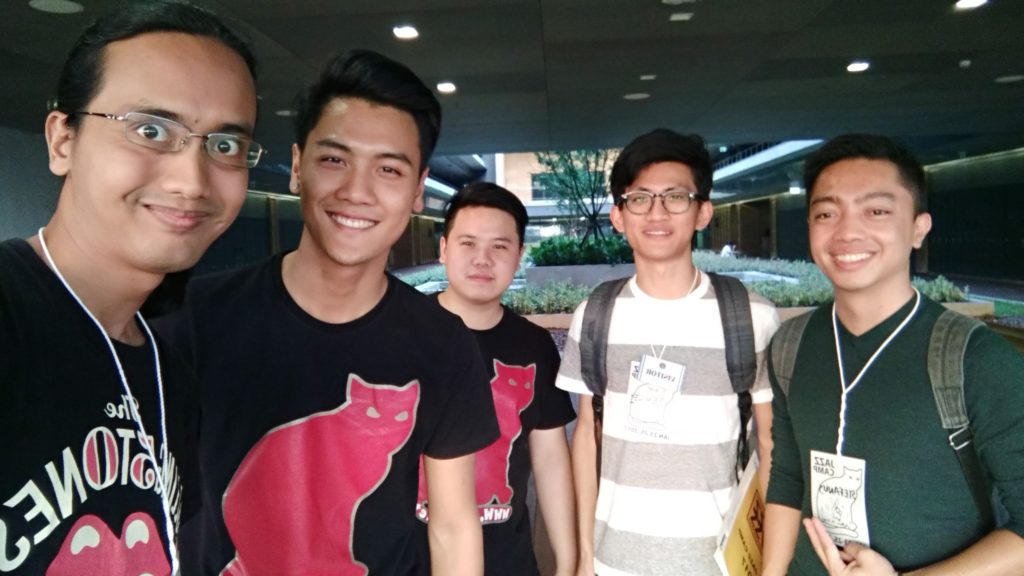
This concludes my take on my experience attending the 3-day Thailand International Jazz Camp 2017. This is my first time attending the camp after attending the conference for the past 2 years. I definitely recommend this as an essential event for jazz students and educators in the region. It’s a great atmosphere with wonderful sessions from world class jazz musicians. Huge congratulations and thanks to the Thailand International Jazz Conference (TIJC) team and to Shai Maestro, Desmond White and Kush Abadey for sharing with us their experience and insights. It was epic!
Special thanks to Yin for encouraging me to document this experience via these updates. This is a full version that collects my original FB posts here:
Part 1
Part 2
Part 3
Part 4
Az Samad
Jan 26 2017 7:31 PM
[…] Thailand International Jazz Camp 2017 with Shai Maestro/Desmond White Group: http://azsamadlessons.com/?p=204 […]